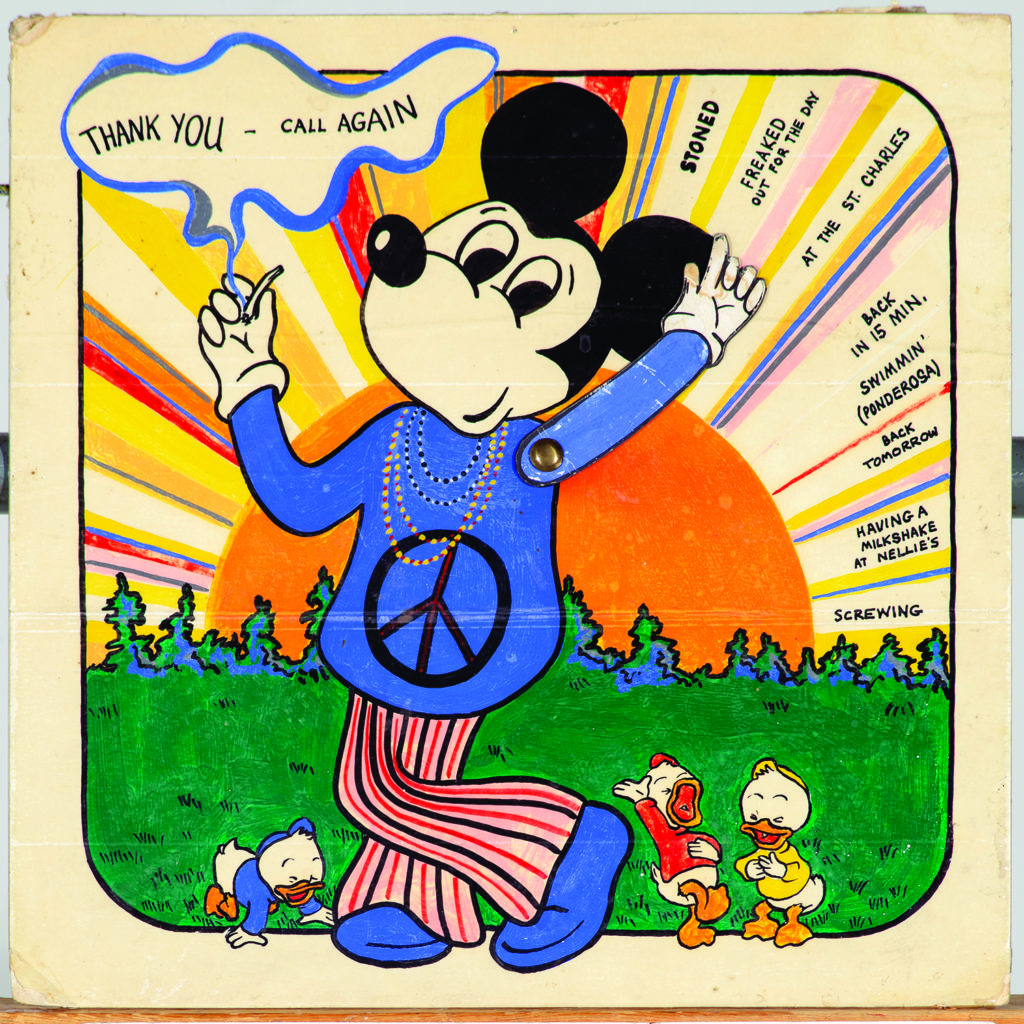The MacKenzie Art Gallery is pleased to introduce “Superscreen: The Making of an Artist-Run Counterculture and the Grand Western Canadian Screen Shop,” in partnership with the School of Art Gallery at the University of Manitoba.
Superscreen looks at the activities, social environment and legacy of one of the prairies’ first artist-run centre, the Grand Western Canadian Screen Shop. The exhibition returns to the Canadian west of the 1960s and 1970s to contextualize the Screen Shop and surrounding milieu within a time characterized by personal and political consciousness-raising and dynamic change within the arts and society at large. Growing out of the era of Pop Art and psychedelia, the exhibition will feature a black light room that brings the Day-Glo prints of artist and innovator Winston Leathers to life.
True to its history as a site of convergence, Winnipeg was a city of both conservative attitudes and liberal activism. It was here, from 1968–1987, that the Grand Western Canadian Screen Shop was founded by artist and provocateur Bill Lobchuk (b.1942). He, along with numerous artists working in and around the shop, established what was to become a colourful hub of artistic engagement, education, experimentation and production in Winnipeg. It also spurred any important axis of dialogue between a generation of artists in Regina and Winnipeg, who travelled back and forth strengthening a regional identity and awareness.
What resulted from these collaborations was artwork that captures a sense of the innovation and diversity of Canadian cultural production from the 1960s to the 1980s, from playful psychedelia and the influence of Pop Art to conceptual questioning, political reflection, regional discourses, Indigenous pride and feminist practice—issues that are still relevant today, 50 years later. Bringing together prints, sculpture, commercial work, photographs and other ephemera from in and around the Screen Shop, this exhibition begins to create a compelling narrative arc that places the vitality and rebelliousness of prairie artists in the 1970s among the significant and notable eras and places in Canadian art history.
Curated by Alex King and Timothy Long, the exhibition will include works in a range of media by many of the Screen Shop cohort, among them Don Proch, General Idea, Judith Huntress Allsopp, Karen Belisle, E.J. Howorth, Tony Tascona, Joe Fafard, Gordon Bonnell, Christopher Finn, Richard Hrabec, Louis Bako, Lenard Anthony and Gordon Lebredt.
This exhibition is on view till May 20, 2019. It will travel to the University of Manitoba School of Art Gallery in the fall of 2019.
Alex King has held the position of curator/preparator for the President’s Art Collection at the University of Regina since 2015. Prior to that, Alex was the curator of the Estevan Art Gallery and Museum from 2013 to 2015, a curatorial assistant at the Winnipeg Art Gallery and an assistant at Sotheby’s in London, England. Alex has a wealth of art experience which has been invaluable in curating the existing University of Regina art collection and collaborating with the MacKenzie Art Gallery in joint exhibition projects.
Timothy Long has over 25 years of curatorial experience at the MacKenzie Art Gallery, where he has been head curator since 2001 and adjunct professor at the University of Regina since 2005. He has co-curated and coordinated a number of exhibitions, which have helped write the history of art in Saskatchewan and Canada, including retrospectives of Arthur F. McKay, Marilyn Levine, Joe Fafard, Jack Sures, Wilf Perreault and David Thauberger. His other curatorial work has created interdisciplinary dialogues between art and sound, ceramics and architecture, and visual art and contemporary dance.
The MacKenzie Art Gallery is Saskatchewan’s original public art gallery: an immersive centre for engaging people through transformative experiences of the world through art. The permanent collection, which includes the University of Regina’s extensive collection, contains over 5,000 works of art spanning 5,000 years of art history.

 Kelly Clark, Door sign for the Grand Western Canadian Screen Shop, ca. 1968. Paint on card. Courtesy University of Regina Archives and Special Collections (2009-32). Photo: Trevor Hopkin.
Kelly Clark, Door sign for the Grand Western Canadian Screen Shop, ca. 1968. Paint on card. Courtesy University of Regina Archives and Special Collections (2009-32). Photo: Trevor Hopkin.



